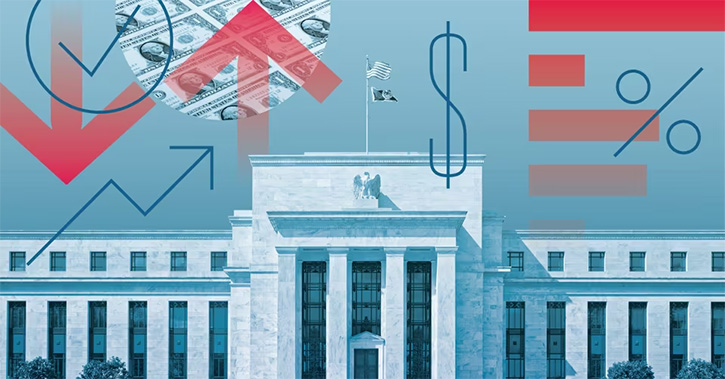As widely expected, the first-quarter GDP growth rate was reduced from a measly 0.2% to an outright decline of 0.7% on Friday. As bad as the revision seemed, it was widely anticipated and could be easily predicted by looking at recently released data revisions.

The West Coast port strike didn't help exports

In fact, the official decline was modestly better than the consensus forecast of a 1% contraction. Even Fed Chairwoman Janet Yellen alluded to the fact in recent speeches that a first-quarter GDP revision to a loss from a gain was a possibility.
Besides the usual small and offsetting revisions, the really large revisions were relatively equally divided between a higher-than-expected estimated surge in imports and a reduction in the inventory build-up that was smaller than originally reported.
The "P" in GDP, production, is not measured directly. Instead, the government counts sales and adds the changes in inventories. More inventory than sales means that production was higher than sales. Conversely, foreign goods that were not produced in the United States end up in retail stores; therefore, they have to be subtracted from GDP.
The revisions were not really a game-changer with the broad contours of the report little changed from the previous one. If anything, we were more pleased with the report versus the previous ones because we despise seeing a huge contribution from inventories, which means production may have been excessive relative to sales levels.
In a weak sales environment, it likely means a reduction in production in subsequent quarters, depressing future GDP reports. So GDP gains from inventories are often a pyrrhic victory, boosting short-term GDP at the expense of future quarters. Over the course of a full year, not just one quarter, the inventory contribution changes little and is relatively close to zero.
Likewise, huge import changes in one quarter tend to be self-correcting over the course of a full year, with a big quarter often followed by small ones. However, in a recovery, imports will trend upward and will hurt the full-year GDP calculation, unlike full-year inventory adjustments, which tend to be relatively small and trendless.
The key takeaways for the quarter are unchanged. Consumers continued to be the key driver of the economy, net exports were a huge detractor as was a rapidly declining oil sector, fewer oil wells show up in the business structures category. Most other categories didn't change enough to make a big difference. Somewhat surprisingly, government spending continued to decline.

Although consumers remained the biggest contributor, that growth rate was more than cut in half between the first and second quarter. Weather weighed on consumers' ability to spend, though I confess that the slowdown was rather broad-based. In the weather-affected category, restaurants, hotels, clothing, and autos were some of the harder-hit sectors.
Still, health-care, groceries, and the other categories weren't so hot, either. Nevertheless, better weather is already helping some categories autos and restaurants in April, and should bode well for a better consumption number in the June quarter.
Exports were influenced by lower growth in energy-related products as well as a general malaise due to a strong dollar, weak world growth, and lack of interest in anything broadly related to the production of commodities. The West Coast port strike certainly didn't help exports, but the bigger impact was on imports. Imports that had been cruising the Pacific Ocean emptied their cargo bays en masse in March, artificially inflating imports. Although the exact timing of when those imports completely clear the harbours is unknown, surely imports will take at least a one-month dive in the near future. That import dip will turn into a huge benefit for the GDP calculation at some point.
We are holding firm for a 2%-2.5% growth rate for the full year. That implies that growth over the next three quarters will average around 3%. With a stronger world economy and a more well-off consumer due to labour scarcity and wage gains, growth next year could accelerate modestly to 2.25%-2.75%. Demographics will keep a lid on many spending categories but may help the housing market slightly.




























